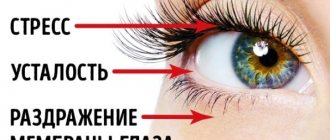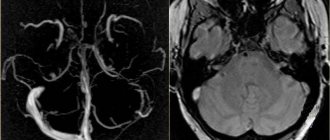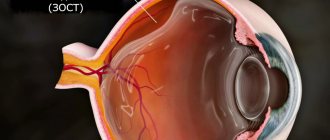Reasons for development
Factors contributing to the development of atheroma on the head are:
- metabolic disorders leading to changes in the properties of the secretion of the sebaceous glands;
- hair dyeing, head shaving with damage to hair follicles;
- hyperhidrosis (especially in combination with seborrheic dermatitis);
- inflammatory diseases of the scalp;
- low-quality hygiene products for hair care;
- Irregular hair washing with the accumulation of viscous oil on the scalp.
Atheromas often form not only on the scalp, but also around the ears and on the chin.
What to do if a child has a lump on the back of his head?
- Causes
- Symptoms
- Treatment methods
A lump is a subcutaneous neoplasm related to a benign tumor. If the defect appears as a result of mechanical damage, then it is not a tumor, but a bulge consisting of lymph and blood.
Parents of active children often notice that their child develops bumps only on the head, and on an arm or leg, even with strong blows, only a bruise. The fact is that when damage occurs to the extremities, blood and intercellular fluid are quickly distributed in the subcutaneous fatty tissue.
There is no such layer on the head, so after damage to the blood vessels, the blood has nowhere to go except to be localized between the skull and skin in the form of a lump.
Causes
The tumor may feel soft or hard to the touch. After falling or hitting a sharp corner of furniture, hard swellings form. If the consistency is soft, a benign tumor (cyst) can be assumed. If the lump on the back of the child’s head was not caused by a blow, then it may be the following types of neoplasms:
- Lipoma;
- Fibroma;
- Wart;
- Atheroma;
- Osteoma;
- Furuncle;
- Hemangioma;
- pilar cyst;
- Cephalohematoma;
- Enlarged lymph nodes;
- Insect bite;
- Allergic reaction;
- Mechanical injury.
The name wen is also common among people. A neoplasm consisting of a sebaceous mass. Lipoma can be effectively treated with folk remedies. A paste of laundry soap and boiled onions is used. Fibroma looks like a dense ball on a stalk.
An excellent remedy for resolving fibroids consists of beet juice and golden mustache. In some cases, specialists prescribe removal. Warts are removed using modern hardware techniques using laser, electrical stimulation, and liquid nitrogen. A pilar cyst is formed as a result of a blockage of the sebaceous duct.
With prolonged accumulation of fat, a hard lump grows on the back of the child's head. Osteoma is a benign bone growth in the form of a lump on a baby's head. Characterized by regular shape, hard to the touch. The child does not complain of pain.
Cephalohematoma is a common tumor among newborns - this is a small tumor in which blood accumulates. The reason is the difficult birth process, in which doctors use forceps to wrap around the baby's head.
Note!
Hemangioma is a dangerous formation. It can degenerate into a malignant tumor. Upon careful examination, the hemangioma is visible through the vascular network. Surgeons remove the tumor and send the contents to a histology laboratory.
Symptoms
The tumor can form in any part of the head
Particular attention should be paid to swelling at the back of the neck. These neoplasms can lead to serious consequences
It is urgent to take the baby to the clinic. Associated symptoms include:
- nausea;
- vomit;
- strong pain;
- the baby is crying;
- convulsions are present;
- blood flows from the nose and ears;
- there are bruises, bruises, hematomas;
- the injured area is swollen.
The above symptoms indicate that there is a bump on the back of the child’s head after a fall, and a strong blow damaged the skull. As a result, the doctor diagnoses a traumatic brain injury. Concussions also happen. In which the patient also experiences severe nausea, vomiting, and dizziness.
Treatment methods
If a bump forms on the back of the child's head, the child often experiences bruising and bruising from the blow. With such damage, it is necessary to apply a cold compress to the sore spot as quickly as possible. To do this, use ice wrapped in a handkerchief.
The compress is held for about 10 - 15 seconds, then released for 5 - 10 seconds. The procedure is performed over 15 minutes. Such actions will prevent an increase in the hematoma and help reduce swelling. Alternatively, a towel soaked in very cold water or a strong saline solution is acceptable.
For a quick recovery, doctors recommend topical medications. Anti-inflammatory ointments with a resorption effect are used. Among folk methods, the following method is widespread. Twice a day, the lump is wiped with an alcohol solution, and then an iodine mesh is applied.
If you find a lump on the back of the head or forehead of your baby, you need to visit different specialists: a surgeon, a neurosurgeon, an otolaryngologist, an allergist, an oncologist. A conscientious attitude to the treatment of a child and a timely visit to the hospital will allow the pathology to be diagnosed at an early stage and dangerous consequences to be prevented.
Loading…
Clinical picture
The cyst is a soft lump with rounded contours, located subcutaneously. Even small atheromas are clearly visible if you part your hair and carefully examine the changed skin.
Non-inflammatory atheromas are painless and do not cause discomfort, but if an infection occurs (which almost always happens with an accidental injury), the symptoms become more obvious. Suppuration of the cyst leads to its increase in size, intense pain, redness of the skin, and local swelling. The skin in the area of the inflamed atheroma is hot, and pus may be released from the outlet of the sebaceous duct.
Cephalohematomas in children
Cephalohematoma, or cephalhematoma, is a hemorrhage under the periosteum of the flat bones of the cranial vault [1–5]. The 10th revision of the International Statistical Classification of Diseases and Related Health Problems uses the wording “P12.0. Cephalhematoma due to birth trauma” [5–8]. According to world literature, the incidence of cephalohematomas in children ranges from 0.2% to 4.0% and does not have a significant downward trend [9–15]. The study of risk factors, mechanisms of formation, clinical features and treatment of cephalohematomas in children is a pressing issue in neonatology and pediatrics [1, 2, 9, 10, 16, 17].
The purpose of this work was to review publications on the etiology, mechanisms of formation, clinical features and treatment of cephalohematomas in children. The review was conducted in online databases including Medline, Web of Science, PubMed, Scopus and the Cochrane Central Register of Controlled Trials over the past 7 years (2012 to 2021).
Risk factors
According to the review, risk factors for the formation of cephalohematomas can be divided into three main groups: maternal, birth and fetal [18, 19]. Many of them coincide with the causes of the development of other natal injuries in children [1, 2, 15, 19]. Maternal factors include the woman’s age (under 16 years and over 35 years), pelvic anomalies, and chronic maternal diseases [1, 2, 4, 19–21]. More often, cephalohematomas are recorded during childbirth in primigravidas and primiparous women, as well as in women with infantilism [18–21]. Cardiovascular, endocrine and other chronic diseases in the mother cause a decrease in the adaptive capabilities of the fetus [19–21]. Poorly controlled diabetes mellitus in women is one of the main causes of fetal macrosomia and, as a consequence, the development of cephalohematomas [19, 21]. Routine administration of anticoagulants and antiplatelet agents to pregnant women affects the blood coagulation mechanism in the fetus and may thereby contribute to the formation of cephalohematomas [15, 19, 21]. Birth risk factors include the condition of the mother's birth canal, method of delivery, prolonged and rapid labor, oligohydramnios, the use of obstetric aids and instrumental techniques [1, 2, 5, 13–15, 18, 19, 22]. Cephalohematomas are more often recorded in children born through the vaginal canal [15, 18, 22]. The incidence of cephalohematomas is related to the qualifications and skills of medical personnel providing assistance during childbirth [2, 5, 13, 14, 18, 20]. The use of vacuum extraction and obstetric forceps increases the risk of developing cephalohematomas by 3–4 times [11, 18, 20, 23]. Fetal risk factors include prematurity, postmaturity, breech or breech presentation, developmental anomalies, large head size and macrosomia [1, 2, 5, 13, 14, 18, 20]. Cephalohematomas are more often recorded in boys compared to girls [5, 19, 21]. A baby's birth weight of 4.0–4.5 kg is associated with a twofold increase in the risk of birth injury. This risk increases 3-fold if the birth weight is between 4.5–5.0 kg, and more than 4.5-fold if the newborn weighs more than 5 kg [18, 20]. Many authors note that cephalohematoma can form without a direct connection with predisposing factors, and the proportion of such cases is 30–32% [5, 7, 13, 14, 21].
Mechanism of formation of cephalohematomas
With strong compression of the skull bones during the passage of the head through the birth canal, the periosteum shifts and is detached. This leads to damage and rupture of blood vessels, as a result of which blood collects in the subperiosteal space [1, 2, 4, 8, 11]. Detachment of the periosteum occurs with a pronounced configuration of the head, as well as with the use of obstetric forceps and vacuum extraction [2, 18, 21, 22]. In 5–25% of cases, cephalohematoma can form due to cracks and fractures of the skull bones [17, 20]. Since with a cephalohematoma, bleeding occurs in a limited subperiosteal space, and with an increase in the volume of the cephalohematoma, the blood vessels are pinched and compressed, which helps to stop the bleeding independently [1, 2, 4].
Clinical features
The formation of a cephalohematoma usually occurs within the first 24–72 hours of a newborn's life. Immediately after the birth of a child, diagnosing subperiosteal hemorrhage is quite difficult due to the presence of a birth tumor [1–5, 11]. Cephalohematoma can be located on any bone of the cranial vault: parietal, occipital, temporal, frontal [1–5]. Most often, cephalohematoma forms in the area of the parietal bones due to the fact that they are subject to the most severe impact during childbirth [4, 9]. In second place in terms of frequency of occurrence is the occipital bone, and in third place is the temporal bone [5, 14]. In the area of the parietal bones, 83–88% of cephalohematomas are found, and in the area of the occipital bone, only 6–12% are recorded [8, 19, 21]. According to S.V. Barinov, the incidence of unilateral cephalohematomas is 89%, bilateral - 11.0% [21]. The formation of several cephalohematomas in one child occurs most often in the area of the right and left parietal bone [5, 8, 18, 23]. Subperiosteal hemorrhage is usually round or oval in shape, with clearly defined boundaries, dense, elastic, tense consistency [5, 18, 20]. Cephalohematoma never spreads to the adjacent bone [1, 2, 4, 11, 14]. Subperiosteal hemorrhage does not pulsate and is painless. The surface of the skin over the cephalohematoma, as a rule, is not changed, but sometimes there may be small hemorrhages and petechiae [1, 2, 4, 11, 14]. An increase in the size of hemorrhage can occur during the first 3 days of life [1–3, 5, 11, 18, 20]. By size, cephalohematomas are divided into small or 1st degree (size up to 4 cm), medium or 2nd degree (from 4.1 to 8 cm) and large or 3rd degree (size more than 8.1 cm). When assessing the size, the maximum diameter of the hemorrhage is taken into account. Cephalohematomas of the 2nd degree (up to 65%) are more common in children; cephalohematomas of the 1st degree (up to 25%) and 3rd degree (up to 10%) are less common [1, 2, 9, 21, 24]. With large hemorrhages, hypotension, anemia, and jaundice may occur due to blood sequestration [1, 2, 4]. According to V.A. Prilutskaya, hyperbilirubinemia is recorded in 11% of cases [24]. In children, it is necessary to monitor the level of hematocrit, hemoglobin, hemodynamic parameters, coagulogram, general biochemical parameters, including the level of bilirubin [1, 2, 4]. Cephalohematoma can be one of the clinical manifestations of hemorrhagic disease of newborns, thrombopathy, hemophilia A, B and C, hypofibrogenemia, afibrinogenemia and dysfibrinogenemia, as well as other hereditary coagulopathies [1–4, 19, 21, 24]. Resorption of cephalohematoma begins by 10–14 days of life. With the onset of resorption, its center becomes somewhat recessed, and a dense ridge begins to form along the edges of the hemorrhage [1–3, 5, 9, 11, 18, 20]. Complete resorption of most subperiosteal hemorrhages occurs by 6–8 weeks of a child’s life. In 2–5% of cases, resorption of the cephalohematoma does not occur and complications in the form of suppuration and calcification may occur [1, 2, 9, 11].
Calcification of cephalohematoma
A long-standing cephalohematoma may become calcified. In the literature, this complication is often called ossification or ossification of cephalohematoma [5, 8, 14]. The incidence of calcification by cephalohematomas is 2–5% [8, 11, 14, 24]. Calcified cephalohematomas change the contour of the cranial vault, which leads to persistent deformation and asymmetry of the child’s head [1, 5, 8, 9, 11, 22]. Calcified cephalohematomas have been proposed to be divided into two types [5, 8]. Cephalohematomas with type 1 calcification are characterized by the fact that the inner plate has a normal contour and is not pressed towards the cranial cavity. With type 2 calcification, the inner plate is pressed into the cranial cavity [5, 8, 11]. Type 1 calcified cephalohematomas occur when the hemorrhage is small. Type 2 is recorded with large subperiosteal hemorrhage [8]. Dividing calcified cephalohematomas into variants is important for determining the surgical tactics for managing such children [5, 11]. In type 1 calcified cephalohematoma, subperiosteal removal of the ossified hematoma is performed. In type 2, cranioplasty may be required to restore the cranial vault [8, 11].
Suppuration of cephalohematoma
The development of suppurative cephalohematoma is a rare but very dangerous complication [16, 25]. In foreign literature, this complication is often called infection of cephalohematoma [16, 18, 25, 26]. Risk factors for the development of suppuration include a long anhydrous period, instrumental aids during childbirth, abrasions and damage to the skin on the head, bacteremia, and the use of electrodes during intrauterine monitoring [16, 25]. Primary infection occurs as a result of damage to the skin in the head area. Secondary infection occurs as a result of bacteremia, as well as sepsis or meningitis [16]. During microbiological examination of suppurating cephalohematomas, Escherichia coli is most often isolated [16, 18, 25, 26]. In second place is Staphylococcus aureus, in third place is Proteus [16, 18, 25, 26]. When a cephalohematoma suppurates, local and systemic signs of infection appear [16]. Local signs include erythema, fluctuation, pain, skin changes, and purulent discharge [1, 2, 16, 25, 26]. Systemic signs are disturbances in thermoregulation, anxiety, irritability, and also possible lethargy, refusal to eat, poor sucking, increasing jaundice and pallor [16, 25]. There may be leukocytosis and increased C-reactive protein levels [25]. Infection of a cephalohematoma often leads to the development of sepsis, meningitis, osteomyelitis and death [16, 18, 25, 26]. When cephalohematoma suppurates, meningitis develops in 26% of children, sepsis in 42% [16]. Mortality rates for the development of sepsis are 35.7% [26]. The main method of treating suppurating subperiosteal hemorrhage is aspiration and drainage, as well as the prescription of antibacterial therapy taking into account the sensitivity of the pathogen [16, 25, 26].
Observation and treatment
Children with subperiosteal hemorrhages usually do not need any drug therapy. Most cephalohematomas are characterized by spontaneous resorption and complete resolution within several weeks or months. [1–4]. It is proposed to carry out only dynamic clinical observation in patients [5, 14]. In the presence of pain, non-drug and drug anesthesia is necessary [1]. Currently, most authors believe that puncture and aspiration of cephalohematomas is not indicated. When puncturing a cephalohematoma, there is a high risk of severe infectious complications [1–3, 5, 9]. Aspiration of hematomas can contribute to the occurrence of recurrent bleeding [1–3, 5, 9]. Clinical algorithms for the management of children with cephalohematomas, which are used in other countries, are of great interest. In the Republic of Kazakhstan, in 2021, a clinical protocol for the diagnosis and treatment of cephalohematomas in newborns was approved. According to the protocol, a child with grade 1 cephalohematoma (size up to 4 cm) does not require hospitalization. Hospitalization in a hospital is indicated only for children with large cephalohematomas, with long-lasting cephalohematomas (more than 10 days), as well as with the development of anemia, hyperbilirubinemia and signs of infection of the cephalohematoma. Surgical intervention is performed only when cephalohematoma suppurates [9].
Literature
- Volodin N. N. Neonatology: national guide. Brief edition. M.: GEOTAR-Media, 2021. 896 p.
- Shabalov N.P. Neonatology. In 2 volumes. T. 1: textbook. allowance. M.: GEOTAR-Media, 2021. 704 p.
- Baibarina E. N., Degtyarev D. N., Zubkov V. V. et al. Clinical recommendations. Basic medical care for the newborn in the delivery room and in the postpartum ward. M.: Association of Neonatologists, 2015. 33 p. Available from: https://neonatology.pro/wp-content/uploads/2015/09/klinrec_Basichelp_2015.pdf. Link active as of 06/25/2019.
- Vlasyuk V.V., Ivanov D.O. Clinical guidelines for the diagnosis and treatment of birth trauma (draft). RASPM, 2021. 28 p. Available at: https://www.raspm.ru/files/travma.pdf. Link active as of 06/25/2019.
- Carvalho F., Medeiros I., Correa F., Pontes FS, Amado M. Hard cranial mass: cephalohematoma? // Journal of Pediatric and Neonatal Individualized Medicine. 2019; 8(1):e080107. DOI: 10.7363/080107.
- International Statistical Classification of Diseases and Related Health Problems 10th Revision (ICD-10). Available from: https://icd.who.int/browse10/2016/en.
- Warke C., Malik S., Chokhandre M., Saboo A. Birth Injuries - A Review of Incidence, Perinatal Risk Factors and Outcome // Bombay Hospital Journal. 2012; 54(2):202–208.
- Idrissi KJ, Mimi AL, Hassani YE, Haloua M., Alami B., Lamrani AY, Maaroufi M., Boubbou M. Calcified Cephalohematoma 02 Cases Report // IOSR Journal of Dental and Medical Sciences. 2019; 18 (1): 61–65.
- Erekeshov A. A., Asilbekov U. E., Ramazanov E. A. et al. Clinical protocol for diagnosis and treatment. Birth trauma (cephalohematoma in newborns). Republican Center for Health Development of the Ministry of Health of the Republic of Kazakhstan. Kazakhstan, 2021. 8 p. Available from: https://diseases.medelement.com/disease/birth-trauma-cephalhematoma-in-newborns/15634. Link active as of 06/25/2019.
- Bardeeva K. A., Pisklakov A. V., Lukash A. A. Osteolysis in a child with cephalohematoma // Fundamental Research. 2015; 1–1: 28–31.
- Vigo V., Battaglia DI, Frassanito P., Tamburrini G., Caldarelli M., Massimi L. Calcified cephalohematoma as an unusual cause of EEG anomalies: case report // J Neurosurg Pediatr. 2017; 19:46–50.
- Yoon SD, Cho BM, Oh SM, Park SH Spontaneous resorption of calcified cephalhematoma in a 9-month-old child: case report // Childs Nerv Syst. 2013; 29:517–519.
- Borna H., Borna S., Mohseni SM, Bager Akhavi Rad SM Incidence of and risk factors for birth trauma in Iran // Taiwan J Obstet Gynecol. 2010; 49(2):170–173.
- Nabavizadeh SA, Bilaniuk LT, Feygin T., Shekdar KV, Zimmerman RA, Vossough A. CT and MRI of pediatric skull lesions with fluid-fluid levels // AJNR Am J Neuroradiol. 2014; 35:604–608.
- Pertseva G.M., Borscheva A.A. Cephalohematoma. Search for factors provoking its appearance // Kuban Scientific Medical Bulletin. 2017; 2 (163): 120–123.
- Zimmermann P., Duppenthaler A. Infected cephalhaematoma in a five-weekold infant - case report and review of the literature // BMC Infectious Diseases. 2016; 16:636.
- Ferraz A., Nunes F., Resende C., Almeida MC, Taborda A. Complicaciones neonatales a corto plazo de los partos por ventosa. Estudio caso-control // An Pediatr (Barc) [Internet]. 2021 Apr ; X: . Available from: https://doi.org/10.1016/j.anpedi.2018.11.016.
- Ojumah N., Ramdhan RC, Wilson C., Loukas M., Oskouian RJ, Tubbs RS Neurological Neonatal Birth Injuries: A Literature Review // Cureus. 2017; 9(12):e1938. DOI: 10.7759/cureus.1938.
- Barinov S.V., Shamina I.V., Chulovsky Yu.I. et al. Risk factors and causes of the development of cephalohematomas in modern conditions // Siberian Medical Journal. 2013; 1:47–49.
- Akangire G., Carter B. Birth injuries in neonates // Pediatr Rev. 2016; 37:451–462.
- Barinov S.V., Shamina I.V., Chernakova E.V. et al. Risk factors for the formation of cephalohematomas in newborns: complications of the gestational period, assessment of the neuropsychic development of children in the first year of life // National Projects of Russia. 2014; 2 (12): 181–185.
- O Brien WT, Care MM, Leach JL Pediatric Emergencies: Imaging of Pediatric Head Trauma // Semin in Ultrasound CT MRI. 2018; 39: 495–514.
- Wen Q., Muraca GM, Ting J., Coad S., Lim KI, Lisonkova S. Temporal trends in severe maternal and neonatal trauma during childbirth: a population-based observational study // BMJ Open. 2018; 8:e020578. DOI: 10.1136/bmjopen-2017–020578.
- Prilutskaya V. A., Ankudovich A. V., Elinevsky B. L. Clinical and diagnostic markers of cephalohematomas in newborns. In the book: BSMU: 90 years at the forefront of medical science and practice: collection. scientific tr. Ministry of Health Rep. Belarus, Bel. state honey. univ. Editorial team: Sikorsky A.V., Kulaga O.K. Minsk: State University of Russian National Library of Science, 2014; 4: 243–245.
- Jason F., Wang BA, Margo, Lederhandler MD, Vikash S., Oza MD Escherichia coli-infected cephalohematoma in an infant // Dermatology Online Journal. 2018; 24 (11): 12.
- Jui-Shan Ma. Meningitis Complicating Infected Cephalohematoma Caused by Klebsiella pneumoniae - Case Report and Review of the Literature // Research Journal of Clinical Pediatrics. 2017; 1 (3): 1–2.
A. F. Kiosov, Candidate of Medical Sciences
GBUZ OKB No. 2, Chelyabinsk
Contact Information
DOI: 10.26295/OS.2019.61.42.010
Cephalohematomas in children / A. F. Kiosov For citation: Attending physician No. 10/2019; Page numbers in the issue: 52-55 Tags: obstetric forceps, vacuum extraction, birth trauma, complications.
Treatment
The most effective way to remove atheromas with minimal risk of recurrence is radio wave excision using the Surgitron device (USA). The procedure does not require shaving the hair; removal takes place under local anesthesia in 30 minutes. Bleeding does not occur due to instant coagulation of blood vessels. The scalp and hair are not damaged. Removal of the formation is non-contact; after the procedure, the doctor carries out an antiseptic treatment and a follow-up examination of the patient. The procedure is outpatient and does not require hospitalization.
Diagnostics
Possible malfunctions that may be a sign of rickets in children should be detected by the local pediatrician during a routine examination. The doctor’s task is to prescribe vitamin D and refer the baby to see specialists. This could be a neurologist, orthopedist, gastroenterologist or endocrinologist. It all depends on the symptoms.
To make a final diagnosis, the following procedures are required:
- Blood test for calcium, phosphorus, vitamin D, creatinine, alkaline phosphatase and parathyroid hormone. Take it on an empty stomach.
- Urine analysis for calcium, phosphorus and creatinine. Take a morning portion of liquid.
- Digital x-ray of limbs and chest.
If a hereditary form of rickets is suspected, a genetic analysis is performed.










